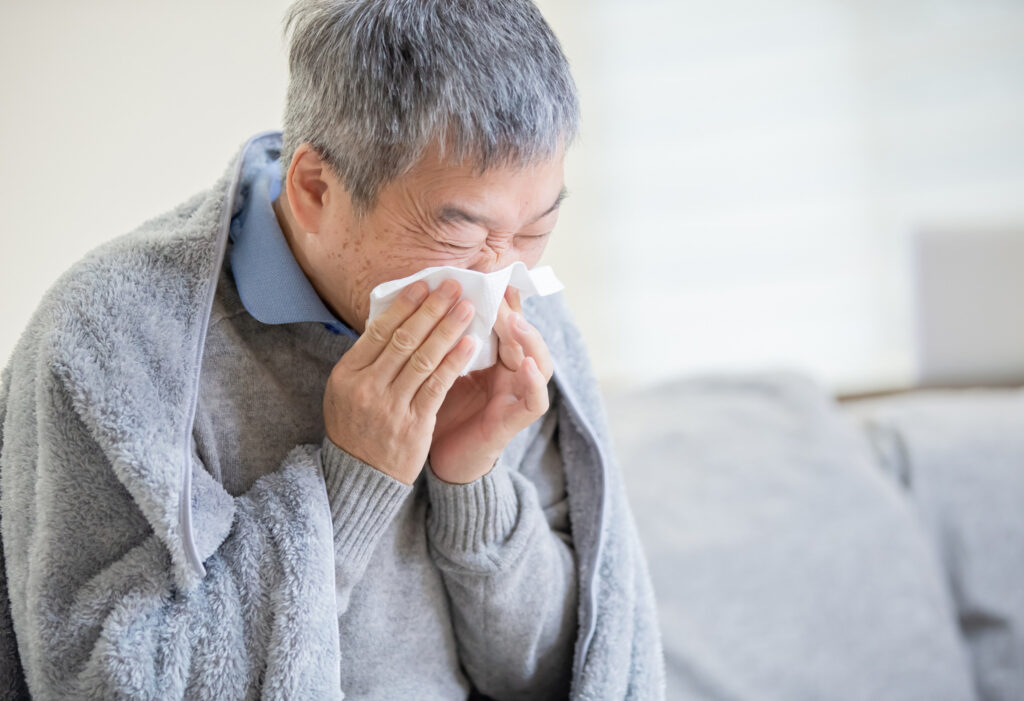Winter’s chill can be more than just a discomfort for those with Parkinson’s disease. Learn how to transform this challenging season into a time of comfort and control.

For individuals living with Parkinson’s disease, cold weather can bring about unique challenges. The drop in temperatures often exacerbates their symptoms, particularly walking difficulty and stiffness, making their daily activities more difficult.
This article provides ten practical tips to assist Parkinson’s patients in managing the colder months with ease and comfort.
1. Cover your body with layered clothing for warmth
Dressing in layers is more effective than wearing one thick garment. Start with a moisture-wicking base layer to keep sweat away from your skin. Add a warm middle layer, like fleece, for insulation. Top it off with a windproof and waterproof outer layer. Don’t forget accessories like insulated gloves, thermal socks, and a hat to cover your head, as a significant amount of body heat is lost through the head.
2. Adjust your home environment for safety and comfort
Ensure your home is well-heated and eliminate fall hazards. Arrange furniture to create clear walking paths. Use automatic night lights for safer nighttime navigation. Keep emergency numbers in an accessible location.
3. Strategically limit outdoor activities
During extreme cold weather, it’s wise to limit your outdoor activity. Cold temperatures can exacerbate Parkinson’s symptoms, making it more challenging to control movements. Planning your outings for warmer parts of the day and asking for assistance when necessary can help reduce the risks associated with cold weather.
4. Enhance mobility and safety outdoors
Walking difficulty is a primary symptom in Parkinson’s disease, which can worsen in winter. Walking tracks can become icy and slippery, increasing the chances of falling. Equip yourself appropriately for outdoor conditions. Use non-slip shoes to prevent falls on icy surfaces. If using walking aids, ensure they are suitable for slippery conditions. Consider physical therapy to learn exercises that improve balance and coordination.
5. Actively build and maintain a support network
Staying indoors during cold weather can be boring and may lead to depressive feelings. Therefore, it’s crucial to stay in touch with friends and family. Joining online forums or local Parkinson’s support groups can provide emotional support and practical tips. Being proactive and staying connected can significantly impact your well-being during the colder months.
6. Regularly manage your medication
Cold weather can distract from regular routines, including medication schedules. Use pill organizers and set alarms as reminders. Discuss with your doctor if medication adjustments are needed for the winter months.
7. Consider therapeutic warmth
A warm bath can be therapeutic for stiff muscles, but be cautious of the water temperature and getting in and out of the tub. Regular massages, preferably from a therapist familiar with Parkinson’s, can improve circulation and muscle function. Consider a heated blanket for added comfort.
8. Implement effective hydration strategies
People often drink less in cold weather, leading to dehydration. This is also common among Parkinson’s patients. Set a daily water intake goal. Herbal teas can be a warming alternative to water. Avoid excessive caffeine and alcohol as they can lead to dehydration.
9. Focus on nutritional needs
In colder months, your body uses more energy to stay warm. Include foods high in Omega-3 fatty acids (like salmon and walnuts) to combat inflammation. Incorporate lean proteins for muscle health and complex carbohydrates for sustained energy. Vitamin D is crucial, especially with limited sunlight exposure, so consider supplements after consulting with your healthcare provider. Be cautious with supplements as some may interfere with Parkinson’s medications.
10. Engage in indoor exercise for flexibility and strength
Exercise is crucial for maintaining muscle strength and flexibility. Create a routine that includes a variety of activities:
- Yoga: Focus on poses that enhance balance and flexibility.
- Pilates: Helps in strengthening the core and improving posture.
- Stationary cycling: A low-impact exercise that promotes cardiovascular health.
- Tai Chi: Its gentle movements are excellent for balance and stress relief.
The takeaway
Effectively managing Parkinson’s disease during the colder months involves a proactive and comprehensive approach. By implementing these action-oriented tips, patients can better manage their symptoms and ensure a good quality of life throughout the winter.
It’s important to remember to consult with healthcare professionals for personalized advice and to make any necessary adjustments to treatment plans. With the right strategies in place, those living with Parkinson’s can confidently embrace the challenges of winter and maintain their well-being and independence.
Disclaimer: The information shared here should not be taken as medical advice. The opinions presented here are not intended to treat any health conditions. For your specific medical problem, consult with your healthcare provider.
